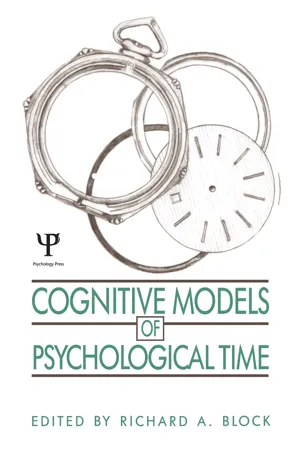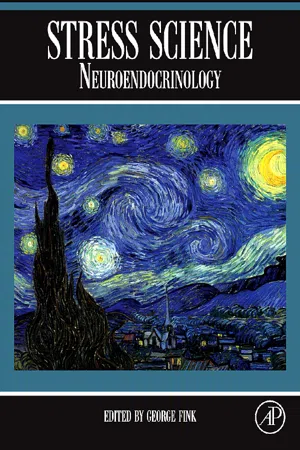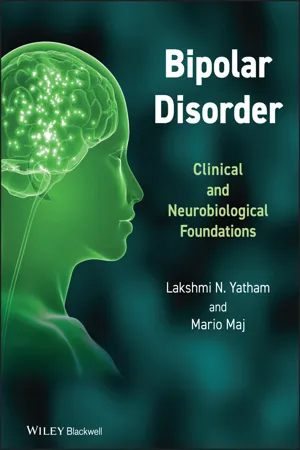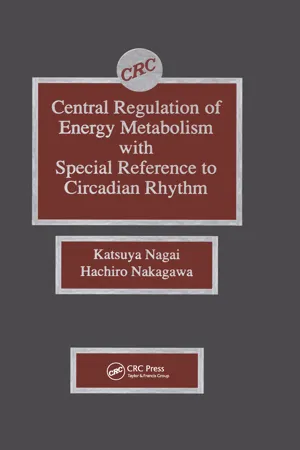Circadian, Infradian and Ultradian Rhythms
Circadian rhythms are biological cycles that occur approximately every 24 hours, influencing sleep-wake patterns and hormone release. Infradian rhythms have a longer cycle, such as the menstrual cycle in humans. Ultradian rhythms are shorter cycles, like the stages of sleep or fluctuations in body temperature throughout the day. These rhythms play a crucial role in regulating various physiological and behavioral processes.
7 Key excerpts on "Circadian, Infradian and Ultradian Rhythms"
- eBook - ePub
Nonclinical Drug Administration
Formulations, Routes and Regimens for Solving Drug Delivery Problems in Animal Model Systems
- Shayne C. Gad, Charles B. Spainhour(Authors)
- 2017(Publication Date)
- CRC Press(Publisher)
...They have even been found in bacteria, especially among the cyanobacteria (e.g., blue-green algae). The most important rhythm in chronobiology is the circadian rhythm, a roughly 24-hour cycle demonstrated in the physiological processes in all these organisms. The term “circadian” comes from the Latin circa, meaning “around” and dies, “day”, meaning “approximately a day.” It is regulated by circadian clocks. Knowledge of these patterns (for the specific species in question) facilitates optimal drug delivery in terms of bioavailability and achieving better specificity in delivery. The circadian rhythm can further be broken down into routine cycles during the 24-hour day: • Diurnal, which describes organisms active during daytime • Nocturnal, which describes organisms active in the night • Crepuscular, which describes animals primarily active during the dawn and dusk hours (e.g., skunks, white-tailed deer, woodchucks) While circadian rhythms are defined as being endogenously regulated, other biological cycles may be regulated by exogenous signals. In some cases, multi-trophic systems may exhibit rhythms driven by the circadian clock of one of the members (which may also be influenced or reset by external factors such as light). The endogenous plant cycles may regulate the activity of the bacterium by controlling the availability of plant-produced photosynthate. Many other important cycles are also studied, including the following: • Infradian rhythms, which are cycles longer than a day, such as the annual migration or reproduction cycles found in certain animals or the human menstrual cycle. • Ultradian rhythms, which are cycles shorter than 24 hours, such as the 90-minute REM cycle, the 4-hour nasal cycle, or the 3-hour cycle of growth hormone production. • Tidal rhythms, commonly observed in marine life, which follow the roughly 12.4-hour transition from high to low tide and back. • Lunar rhythms, which follow the lunar month (29.5 days)...
- eBook - ePub
- Richard A. Block, Richard A. Block(Authors)
- 2014(Publication Date)
- Psychology Press(Publisher)
...Therefore, it seems useful to begin with a brief overview of this biological timing system. The Nature of Circadian Rhythms Discovery of Circadian Principles In response to the natural alternation in light and darkness, virtually all species have developed endogenously mediated rhythms with frequencies close to 24 hr. The pervasive nature of such rhythmic components in physiology and behavior suggests that this circadian (circa = about, dies = day; Halberg, 1959) temporal organization is vital to the overall wellbeing of the organism. Among the numerous systems and functions mediated by the circadian timing system are hormonal output, body core temperature, rest and activity, sleep and wakefulness, and motor and cognitive performance. In all, literally hundreds of circadian rhythms in mammalian species have been identified (see, for example, Aschoff, 1981; Conroy & Mills, 1970), and Aschoff (1965) has noted that "there is apparently no organ and no function in the body which does not exhibit a similar daily rhythmicity" (p. 1427). The proof that such rhythms are governed by factors inherent to the organism, rather than by the environmental cues with which they are typically synchronized, can be derived only from studies of organisms living in the absence of external factors that may provide cues to time of day or, more generally, to the passage of time. The first published study to utilize such a methodology reported on the daily leaf movements in a plant, Mimosa pudica (de Mairan, 1729; cited in Bunning, 1960). Although the plant was kept in total darkness, its leaves continued to exhibit closure and unfolding at times roughly corresponding to dusk and dawn...
- eBook - ePub
- R.W. Horton, Cornelius Katona(Authors)
- 2013(Publication Date)
- Academic Press(Publisher)
...The most prominent rhythms are those which oscillate with a frequency corresponding to that of a major environmental periodicity: daily, lunar or seasonal. This has led to speculation that in the course of evolution, external periodicity has been internalized in the form of a ‘biological clock’ (Pittendrigh and Bruce, 1957 ; Pittendrigh, 1979). In this view, internal timing systems serve to coordinate the temporal sequence of metabolic and physiological events, synchronizing interdependent functions, segregating incompatible ones, and allowing organisms to anticipate, prepare for, and use to advantage the major changes that predictably recur in their external environment (Pittendrigh, 1979 ; Moore-Ede, 1986 ; Wehr et al., 1988 ; Rusak, 1989). Thus, organisms can adapt to ‘niches in time’ (Aschoff, 1981c). 7.2.1 Circadian rhythms Circadian rhythms are perhaps the most extensively studied of all biological oscillations. They are genetically determined rhythms of nearly 24 h (circa diem = about a day: Halberg, 1959) that are found in all eukaryotic organisms (Pittendrigh, 1960 ; Aschoff, 1981b ; Minors and Waterhouse, 1981). Circadian rhythms persist in the absence of external time cues (or zeitgebers), even in spacecraft orbiting the Earth (e.g. Sulzman et al., 1984); therefore, the source of circadian rhythmicity is an internal oscillator (de Mairan, 1729 ; Bünning, 1935 ; Aschoff, 1979). Light is the dominant external zeitgeber and in many species probably the only agent that entrains (synchronizes) the circadian system to a 24-h day. The SCN appears to be the primary endogenous pacemaker for mammalian circadian rhythms 1 (Rusak and Zucker, 1979 ; Moore, 1983 ; Turek, 1985 ; Pickard et al., 1987)...
- eBook - ePub
- A. Ward Gardner(Author)
- 2013(Publication Date)
- Butterworth-Heinemann(Publisher)
...In our normal environment such circadian rhythms are synchronized to a period closer to 24 hours by rhythmic changes in environmental factors known as zeitgebers. The nature of these zeitgebers depends upon the living organism under consideration. 5 For example, in many plants it is the alternation of light and dark that adjusts the internal clock each day. Further, due to the changes in times of sunrise and sunset that occur with the seasons, the clock is adjusted to a period of exactly 24 hours only at the solstices. In predatory animals, the clock is adjusted by the rhythmic availability or absence of food; and, in the case of certain dwellers in the intertidal zone, it is the regular buffeting from high tides which adjusts rhythms to a tidal or lunar day with a period of about 24.8 hours. For humans living in society and able to make use of artificial lighting and preserved food, none of these factors need be particularly important. Instead it is the structure imposed upon us by society as a whole. Thus there are only certain occasions when it is acceptable or socially convenient to sleep, go shopping, make a noise, expect eating facilities etc. Even if we could be independent with regard to lighting and food, we still have to go to bed at the ‘normal’ time in order to have enough sleep, before getting up for work, school etc. the next day. The exogenous component The external environment not only adjusts the internal clock but also exerts a direct effect upon a rhythm measured under normal circumstances. 1 – 3 Thus the rhythm of deep body temperature in individuals living in a rhythmic environment demonstrates a higher daytime value than when the individuals were under constant routine conditions; by contrast, night-time values are lower in a rhythmic environment than during a constant routine...
- eBook - ePub
Stress Science
Neuroendocrinology
- George Fink(Author)
- 2010(Publication Date)
- Academic Press(Publisher)
...In nature, the light–dark cycle is the primary external environmental signal that entrains the circadian clock to the 24-h period of the day that is due to the rotation of the earth on its axis. Free-running Term used to describe circadian rhythms persisting in the absence of any 24-h synchronizing information from the external environment. The expression of free-running circadian rhythms with a period close to (e.g., 23–24 h) but rarely exactly 24 h demonstrates the endogenous nature of the circadian clock underlying the expression of circadian rhythms. Period The length of a cycle of the rhythm. The period of a free-running rhythm is considered a fundamental property of the circadian clock. Phase The timing of the rhythm. During entrainment, the timing of a phase reference point (such as activity onset) relative to the external time cue (such as lights on) should be stable. This relative timing is referred to as the phase angle of entrainment. The rhythm-resetting response to a perturbation such as a brief light exposure is measured as a phase shift. The Molecular Circadian Clock Early studies in invertebrates demonstrated that the period of the circadian clock was clearly under genetic control since 24-h rhythms developed in organisms never experiencing any 24-h changes in the physical environment. Furthermore, rearing mice on non-24-h cycles as extreme as 20 or 28 h has only small (i.e., on the order of a few minutes) and transient effects on the free-running period of the circadian clock when animals are subsequently housed under conditions of constant darkness (i.e., the free-running period remains within a few minutes of 24 h)...
- eBook - ePub
Bipolar Disorder
Clinical and Neurobiological Foundations
- Lakshmi N. Yatham, Mario Maj, Lakshmi N. Yatham, Mario Maj(Authors)
- 2011(Publication Date)
- Wiley(Publisher)
...Subsequently, literature on circadian- and sleep-moderation of emotion is reviewed, largely focusing on non-clinical populations. Evidence for an association between biological rhythms and BD is detailed next, and causal inferences considered. The following section considers potential mechanisms of biological rhythm action in BD, particularly the impact of clock genes. Finally, we introduce clinical implications of the fact that biological rhythmicity is modified by behaviour (Section 20.6). Circadian rhythms and sleep Circadian system The endogenous circadian time-keeping system, strongly conserved across species, is adapted to optimize engagement with the earth’s cyclic environment by predicting critical environmental change [6]. In mammals, the circadian pacemaker responsible for the temporal internal organization and generation of endogenous rhythms of approximately 24 h is located in the hypothalamic suprachiasmatic nucleus (SCN, [7]). 2 At the molecular level, intrinsically rhythmic cells of the SCN generate self-sustained rhythmicity via an auto-regulatory transcription-translation feedback loop regulating expression of the Period (Per1, Per2, Per3), cryptochrome(Cry1, Cry2), TIM, DEC1 and DEC2 genes [8]. 3 The endogenous period generated in the SCN is close to, but generally not equal to 24-hour. The process by which the pacemaker is both set to a 24-hour period and kept in appropriate phase with seasonally shifting astronomical day length is called entrainment. An important property of the circadian system, therefore, is its fundamentally open nature, and this open nature includes feedback to the pacemaker from clock-controlled activity of the organism [10]. Entrainment occurs via zeitgebers (environmental events that can affect phase and period of the clock), the most prominent of which is the daily alteration of light and dark due to the planet’s rotation [11]...
- Katsuya Nagai(Author)
- 2022(Publication Date)
- Routledge(Publisher)
...Chapter 3 CIRCADIAN RHYTHMS AND THEIR SIGNIFICANCES IN SURVIVAL OF ANIMALS DOI: 10.1201/9781315138985-3 I. TIME DEPENDENCY AND CIRCADIAN RHYTHMS A. THE EFFECTS OF CHANGING ENVIRONMENTAL FACTORS ON THE LIVES OF ANIMALS It was previously mentioned that the tone of the autonomic nervous system changed time dependently and that this might be involved in time-dependent hyperglycemic responses to intracranial injections of 2DG, MA, and GL. These phenomena raise some essential questions such as what mechanisms are responsible for time-dependent changes in the tone of the autonomic nervous system, whether these time-dependent phenomena take place generally in animal bodies, and what their basic function is. To solve these problems, we need to understand first the relationship between the rotation of the earth and its effects on animal behaviors. Food intake is a good way to illustrate this point. B. FOOD INTAKE The rotation of the earth results in day and night and two classes of animals in terms of feeding behavior. Diurnal animals, including human beings, are active in the daytime and sleep at night. Nocturnal animals (including many ranging in size from bears to rats, mice, and hamsters) are active during the night and rest in the daytime. This enemy-prey relationship has been considered as a causative factor of such ecological evolution. Figure 23 shows a feeding pattern of a rat, represented by the doubleplot method in which a 48-h record is depicted in a line. In this case, the amount of food taken every 30 min was measured. The animal was kept in a room under a 12-h light and 12-h dark cycle (L:D = 12:12) and at 24°C. Rats generally take more than 70% of their daily food intake in the dark period. In this case, the rat ate more than 90% of its daily food intake in the dark period. At the day indicated by an arrow, it was blinded by bilateral orbital enucleation. After this operation, the animal began to eat in a cycle of 24 h and 8 min...






